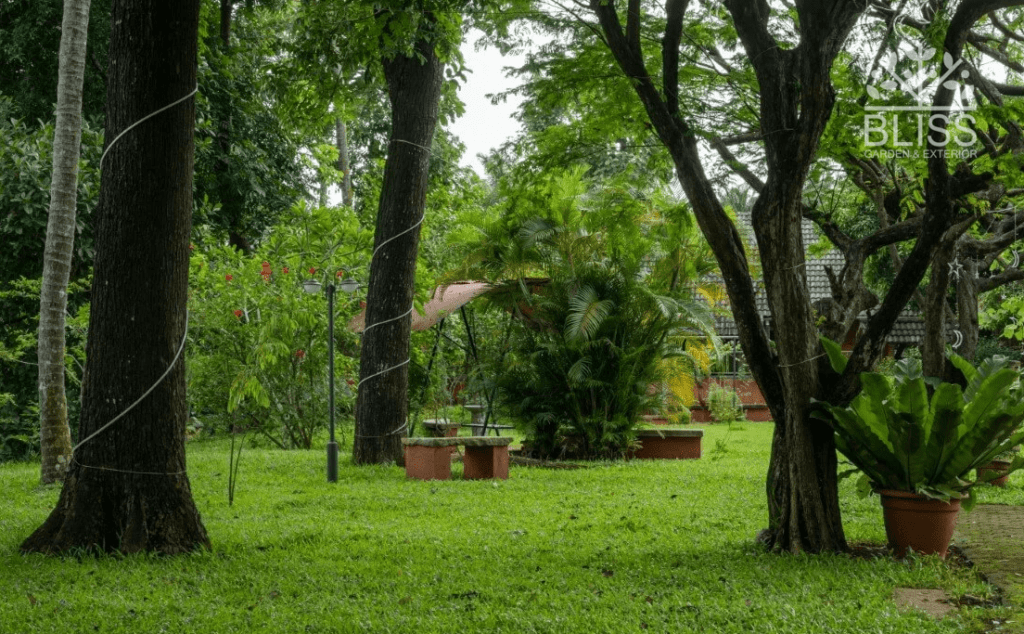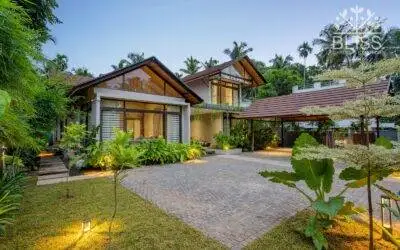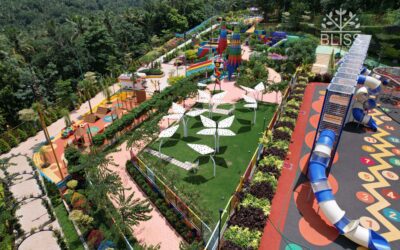When it comes to landscaping, there are two fundamental approaches: softscaping and hardscaping. Both contribute to the beauty and functionality of outdoor spaces, but they serve different purposes and offer distinct aesthetics.
This blog comprehensively compares softscaping and hardscaping, highlighting their features, benefits, and when to use them in your outdoor projects.
What is Softscaping?

Softscaping primarily involves the use of living elements in your landscape design.
This encompasses all things green and growing: plants, trees, shrubs, flowers, grass, and even the soil they thrive in.
Softscaping is all about adding natural beauty to your outdoor space. Here are some key elements of softscaping:
Plants: Softscaping relies heavily on various plant types, including annuals, perennials, and groundcovers. These elements provide color, texture, and visual interest to your landscape.
Trees and Shrubs: Trees offer shade, while shrubs can be used for privacy or as decorative elements. They also add vertical dimension to the landscape.
Flowers: Blooming flowers can enhance the visual appeal of your landscape, creating vibrant focal points.
Grass and Turf: A well-maintained lawn or grassy area is crucial to softscaping, adding a lush texture to your landscape.
Soil and Mulch: The soil and mulch quality can influence your plants’ growth and health. Proper soil preparation and mulching are vital aspects of softscaping.
What is Hardscaping?

Hardscaping, on the other hand, deals with the inanimate features of your landscape.
It involves the construction and incorporation of non-living elements that enhance the structure and functionality of your outdoor space.
Here are some key components of hardscaping:
Paved Surfaces: Hardscaping often includes walkways, patios, driveways, and other paved surfaces. These elements provide functional pathways and define various areas of your outdoor space.
Retaining Walls: Retaining walls create level areas, hold back soil, and add depth to the landscape. They are both functional and aesthetically pleasing.
Fences and Walls: Fencing and walls serve as boundaries and offer privacy. They also add vertical elements and can be ornamental.
Outdoor Structures: This includes gazebos, pergolas, and outdoor kitchens, providing shelter and functionality in your landscape.
Water Features: Fountains, ponds, and streams add a soothing, natural element to your landscape design.
Comparing the Two: Softscaping vs. Hardscaping
Aesthetics
Softscaping: Softscaping introduces a sense of natural beauty and organic diversity to your landscape. It provides lushness, color, and a connection to nature.
Hardscaping: With its structured and often architectural elements, Hardscaping can add a sense of order and formality to your outdoor space. It introduces clean lines and a sense of permanence.
Functionality
Softscaping: Softscaping mainly contributes to the visual appeal of your landscape, although it can offer some shade and act as a privacy screen.
Hardscaping: Hardscaping provides functional elements, such as pathways, seating areas, and retaining walls, making your outdoor space more usable.
Maintenance
Softscaping: Softscaping requires ongoing maintenance, including planting, pruning, weeding, and watering. It’s an evolving aspect of your landscape that can change with the seasons.
Hardscaping: Hardscaping generally requires less maintenance. Once installed, it remains unchanged, although some cleaning and repairs may be necessary.
Cost
Softscaping: Softscaping can be less expensive initially, but the ongoing maintenance costs can accumulate over time.
Hardscaping: Hardscaping can have higher upfront costs due to materials and labor but may be more cost-effective in the long run due to reduced maintenance needs.
Flexibility
Softscaping: Softscaping is relatively flexible and can be easily adjusted or changed. Plant selections can be altered and rearranged to suit your preferences.
Hardscaping: Hardscaping is more permanent, making it less adaptable. Changes are often costly and may involve significant work.
Wrapping Up
In landscaping, both softscaping and hardscaping have their unique roles and contributions. The key to a successful landscape design is finding the right balance between these two elements to create a stunning outdoor space that serves your functional needs.
Whether you lean more towards the soft, natural beauty of softscaping or the structured functionality of hardscaping, your landscape design should reflect your personal preferences and the specific requirements of your outdoor space.
A well-thought-out combination of both elements can result in a harmonious, inviting, and highly functional landscape you’ll enjoy for years.
Pages You Might Like:
Landscape architects in Dubai | Villa landscaping dubai | Garden landscaping dubai | Landscape company in Dubai | Landscape architects in Kerala | Best landscaping company in Kerala | Landscaping in Kerala | Landscaping companies in Kerala



